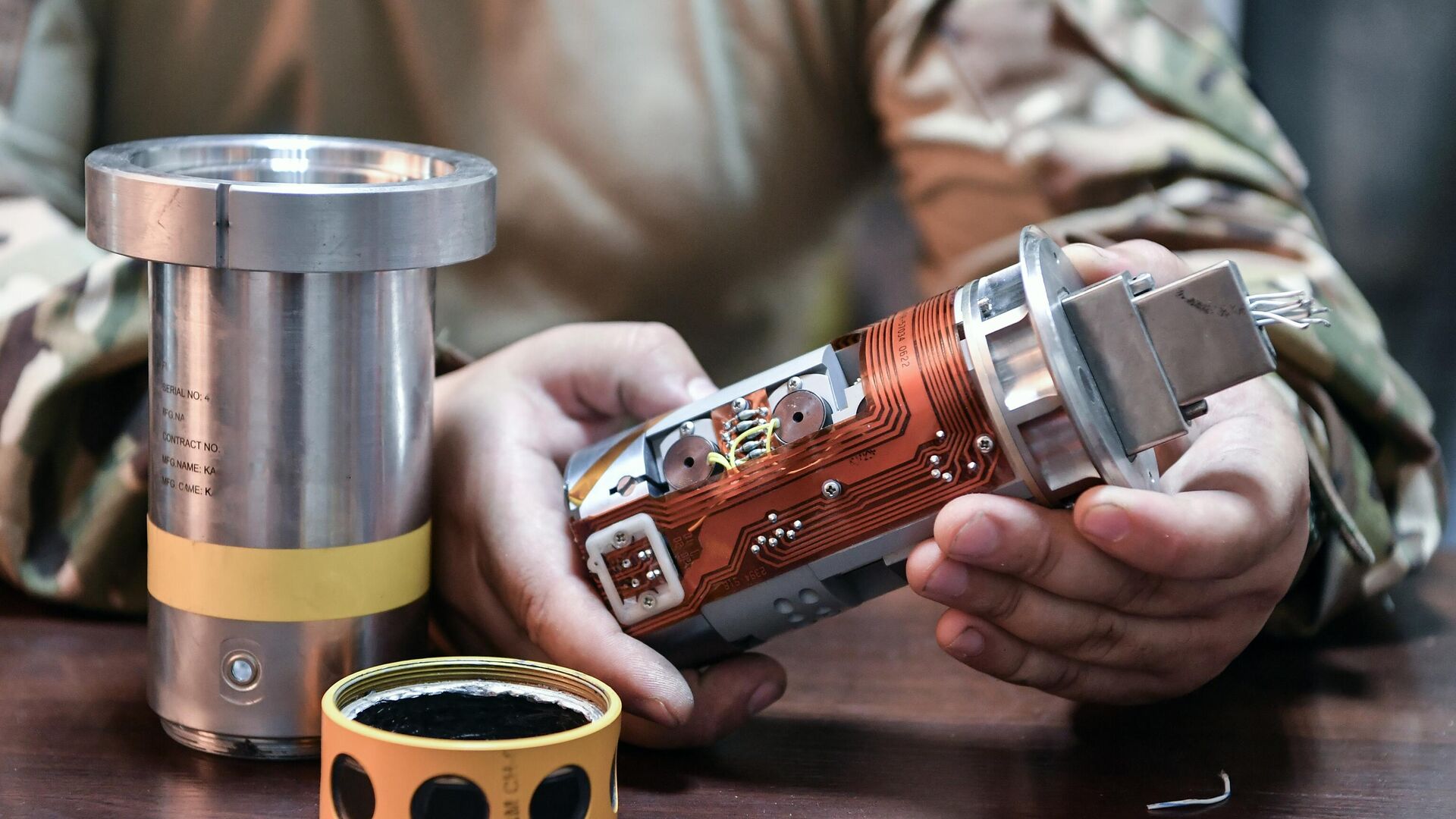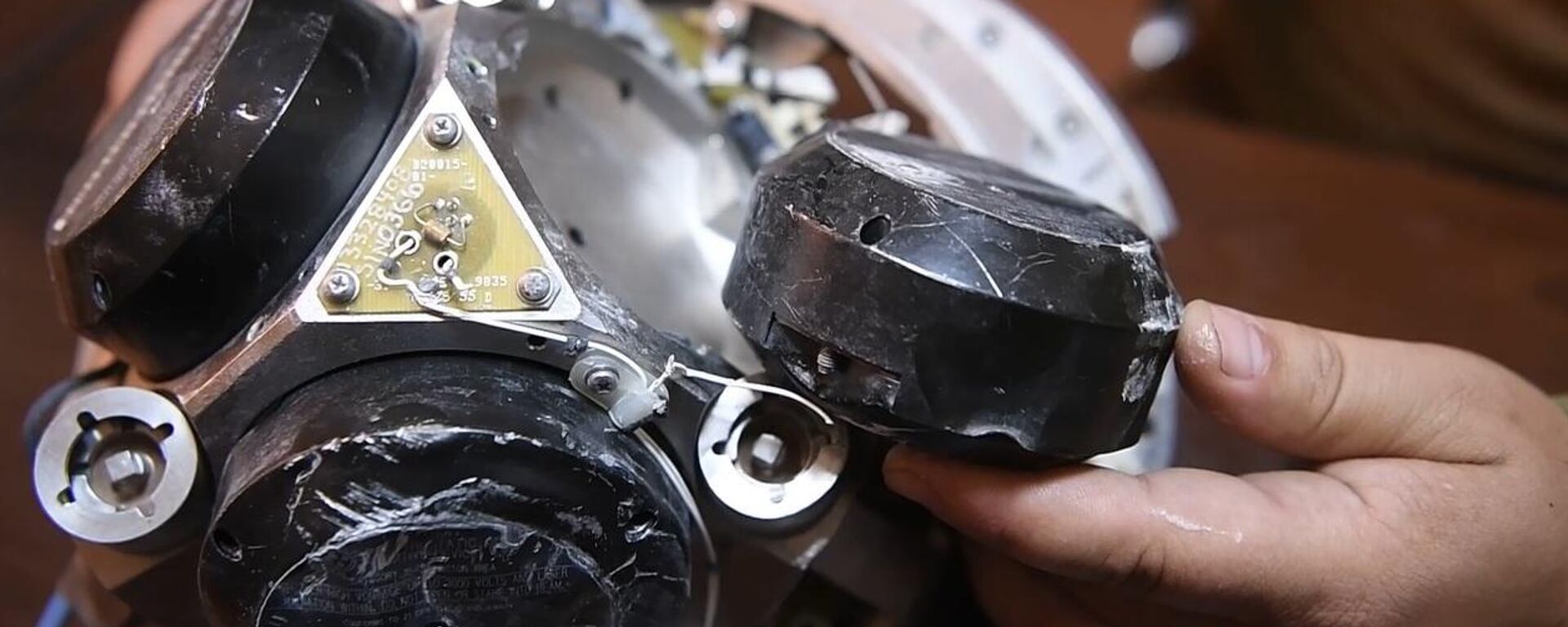https://sputnikglobe.com/20240706/what-did-russian-specialists-discover-after-examining-us-made-atacms-missile-1119259771.html
What Did Russian Specialists Discover After Examining US-Made ATACMS Missile?
What Did Russian Specialists Discover After Examining US-Made ATACMS Missile?
Sputnik International
Luck is smiling on Russia's military specialists, as their search for various elements of the ATACMS has resulted in a new discovery. Russian experts recently got hold of the submunition of the missile used by Ukraine to attack Russian citizens and civilian infrastructure.
2024-07-06T07:52+0000
2024-07-06T07:52+0000
2024-07-06T07:52+0000
military
army tactical missile system (atacms)
russia
ukraine
us arms for ukraine
military aid
us military aid
foreign military aid
cluster munitions
https://cdn1.img.sputnikglobe.com/img/07e8/07/06/1119259859_0:160:3072:1888_1920x0_80_0_0_f2a89ba11d4382a9a42d3380917ee86a.jpg
The cluster submunition, which is part of the missile, is a green, spherical object about the size of a tennis ball, with a casing that has projections along a circumferential axis.The expert clarified that the submunition cannot be moved because it is likely to go off at any moment, even if it does not explode immediately after being dropped."So civilians have to be very careful because it is painted green and is very hard to see in the grass. Any physical pressure on it can have dire consequences," he stressed.The ATACMS fragments can be scattered in a radius of 20 meters, but some fragments can even penetrate metal doors from a distance of 50 meters. So the ammunition has a smaller fragmentation field and a lower hit probability, but the lethality of the fragments is an immense threat."Each munition falls within five meters from each other, causing complete destruction all at once. When it rains down, it is almost impossible to hide from it," the expert highlighted.Russian specialists also established that the warhead was originally developed for an anti-ship missile, but was later installed on the ATACMS missile. They found out that it has three ring laser gyroscopes and a GPS antenna that corrects its ballistic trajectory.President Vladimir Putin has called the move "another mistake by the United States". He believes that these weapons pose an additional threat, though not one large enough to radically alter the situation on the front lines.
https://sputnikglobe.com/20240705/exclusive-russian-specialists-studied-concept-of-operation-of-atacms-cluster-submunition-1119249010.html
https://sputnikglobe.com/20240701/examination-of-atacms-will-help-russia-destroy-nato-weapons-faster--retired-colonel-1119208006.html
russia
ukraine
Sputnik International
feedback@sputniknews.com
+74956456601
MIA „Rossiya Segodnya“
2024
Sputnik International
feedback@sputniknews.com
+74956456601
MIA „Rossiya Segodnya“
News
en_EN
Sputnik International
feedback@sputniknews.com
+74956456601
MIA „Rossiya Segodnya“
Sputnik International
feedback@sputniknews.com
+74956456601
MIA „Rossiya Segodnya“
russia’s special military op in ukraine, special military operation, special military operational zone, special op zone, russian troops in special op zone, ukraine casualties in conflict, total ukrainian losses, how many people did ukraine loose, how many people did kiev loose, new russian weapons in ukraine, advanced russian weapons, russian defense ministry statements, latest russian military statements, what did shoigu say about ukraine, donetsk people’s republic, nato in ukraine, is nato in ukraine, russian drones, drone warfare, new military drones, uavs in ukraine, ukraine crisis, ukraine conflict, battlegroup sever, battlegroup yug, battlegroup zapad, battlegroup vostok, battlegroup tsentr, battlegroup dnepr, russia ukraine peace talks, russia ukraine peace settlement, russia ukraine negotiations
russia’s special military op in ukraine, special military operation, special military operational zone, special op zone, russian troops in special op zone, ukraine casualties in conflict, total ukrainian losses, how many people did ukraine loose, how many people did kiev loose, new russian weapons in ukraine, advanced russian weapons, russian defense ministry statements, latest russian military statements, what did shoigu say about ukraine, donetsk people’s republic, nato in ukraine, is nato in ukraine, russian drones, drone warfare, new military drones, uavs in ukraine, ukraine crisis, ukraine conflict, battlegroup sever, battlegroup yug, battlegroup zapad, battlegroup vostok, battlegroup tsentr, battlegroup dnepr, russia ukraine peace talks, russia ukraine peace settlement, russia ukraine negotiations
What Did Russian Specialists Discover After Examining US-Made ATACMS Missile?
Luck is smiling on Russia's military specialists, as their search for various elements of the ATACMS has resulted in a new discovery. Russian experts recently got hold of the submunition of the missile used by Ukraine to attack Russian citizens and civilian infrastructure.
The cluster submunition, which is part of the missile, is a green, spherical object about the size of a tennis ball, with a casing that has projections along a circumferential axis.
"M74 cluster submunition. An ATACMS long-range missile has 275 of these. The [warhead's] cassette opens about 200 meters [656 feet] above the ground. Due to the protruding feathers, overtaking flow starts rotating it. When it gains about 2,000 revolutions, the centrifugal stoppers separate to the sides, and the engine inside rotates. The primer/detonator is placed opposite to the striker. The munition explodes upon impact with the surface," a Russian military specialist told Sputnik.
The
expert clarified that the submunition cannot be moved because it is likely to go off at any moment, even if it does not explode immediately after being dropped.
"So civilians have to be very careful because it is painted green and is very hard to see in the grass. Any physical pressure on it can have dire consequences," he stressed.
The
ATACMS fragments can be scattered in a radius of 20 meters, but some fragments can even penetrate metal doors from a distance of 50 meters. So the ammunition has a smaller fragmentation field and a lower hit probability, but the lethality of the fragments is an immense threat.
"Each munition falls within five meters from each other, causing complete destruction all at once. When it rains down, it is almost impossible to hide from it," the expert highlighted.
Russian
specialists also established that the warhead was originally developed for an anti-ship missile, but was later installed on the ATACMS missile. They found out that it has three ring laser gyroscopes and a GPS antenna that corrects its ballistic trajectory.
"It has been almost completely examined. There are no secrets left for us," he concluded.
In 2023, the US began supplying ATACMS ballistic missiles to Ukraine. The missiles are manufactured by Lockheed Martin and have a caliber of 610 millimeters, a length of 4 meters and a weight of 1.6 tons. The Block 1 modification has a range of 165 kilometers (102 miles).
President Vladimir Putin has called the move "
another mistake by the United States". He believes that these weapons pose an additional threat, though
not one large enough to radically alter the situation on the front lines.



